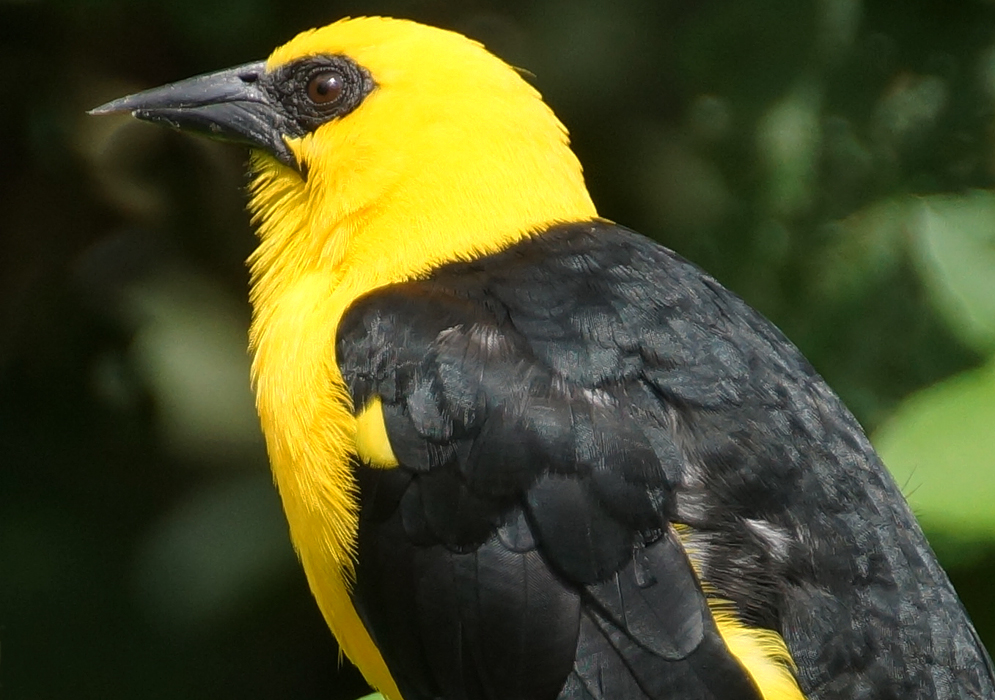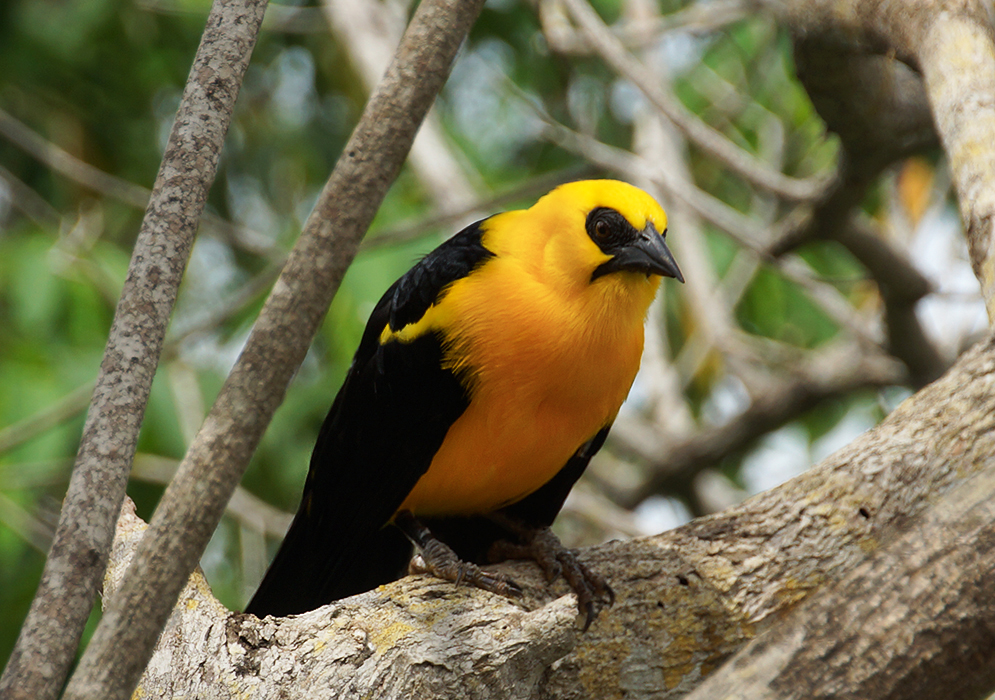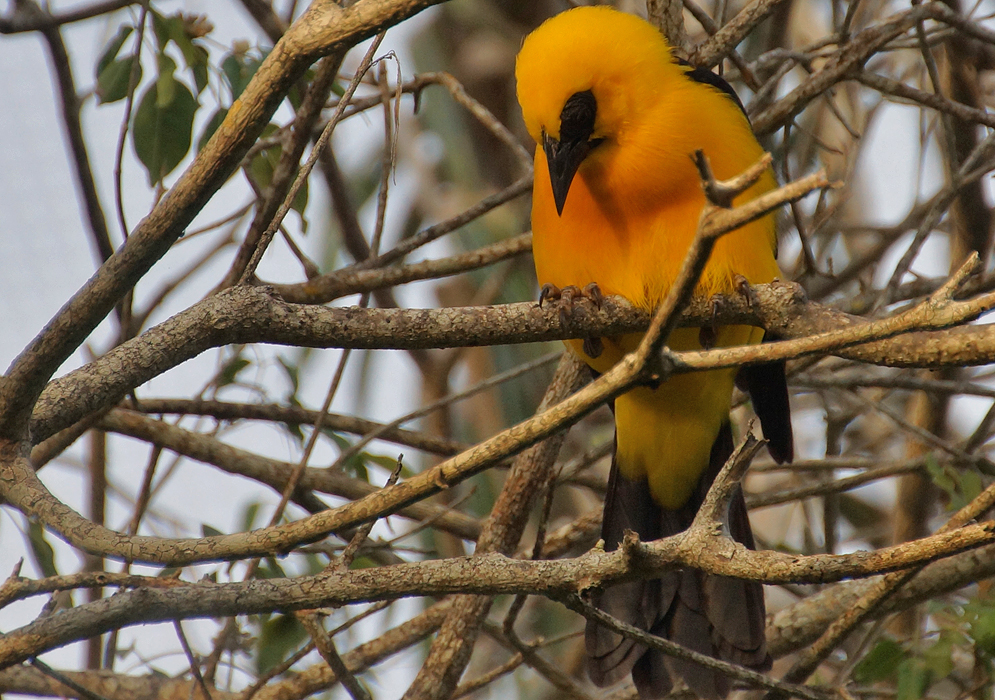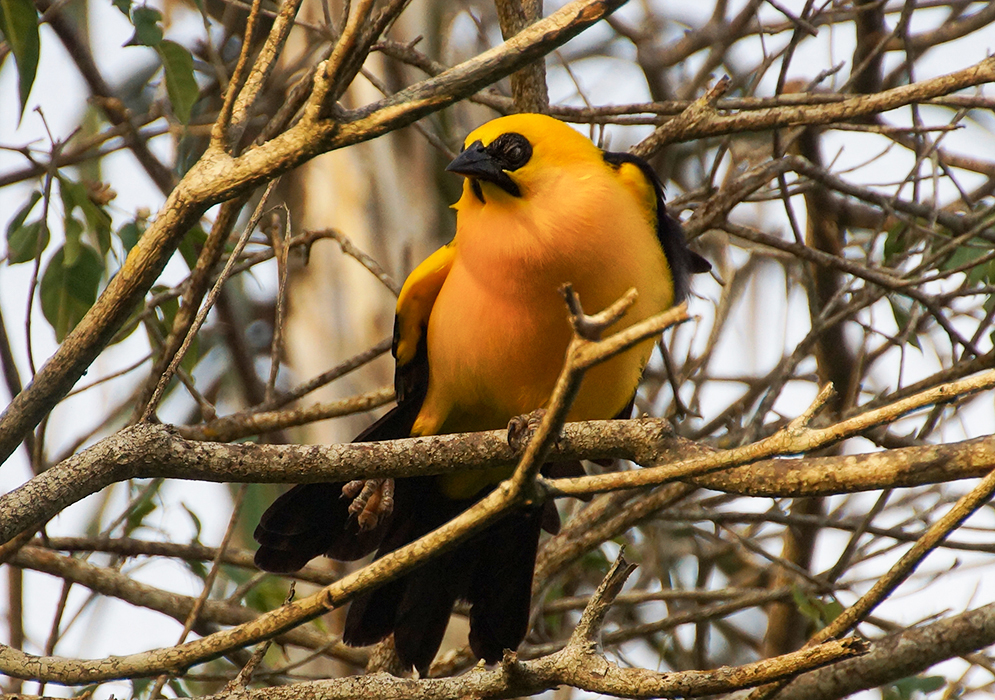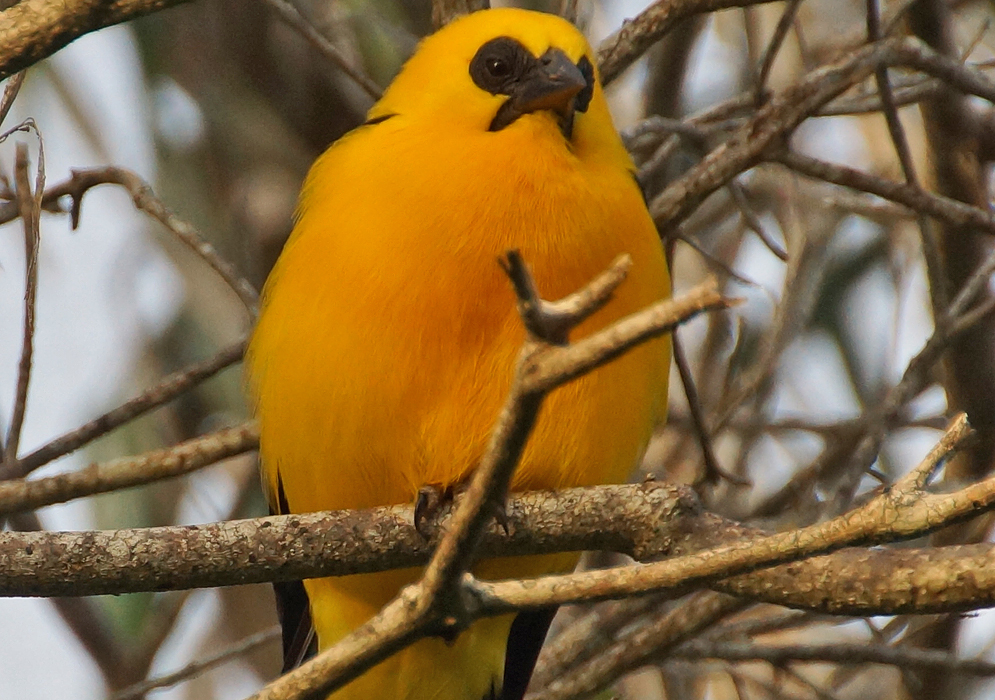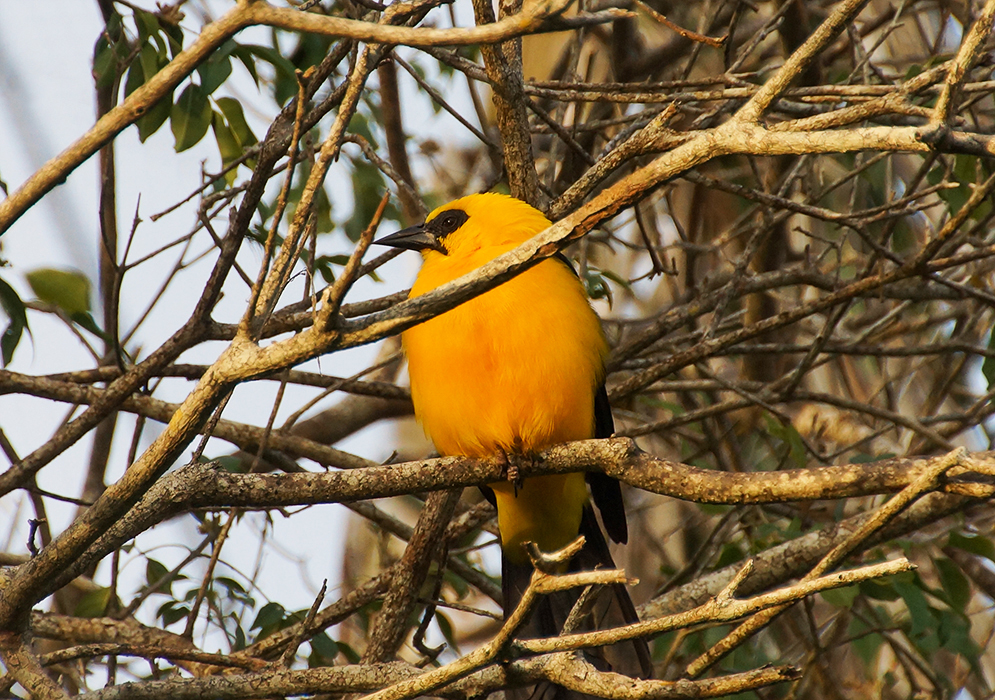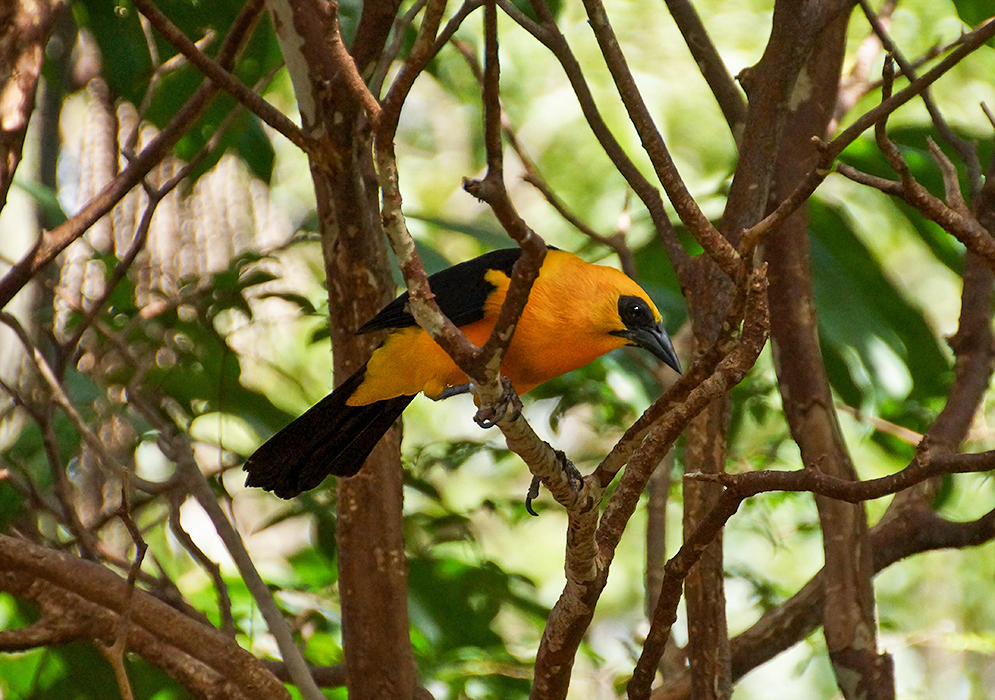This post has 11 Simple Fields-fields attached. Show fields.
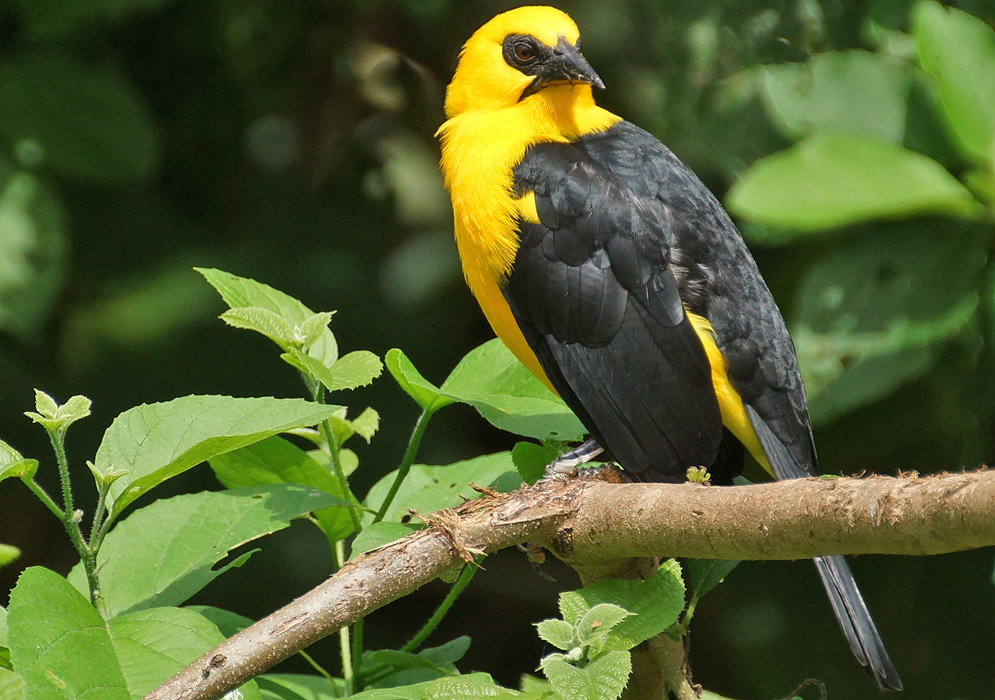
The Oriole Blackbird is a medium-sized bird known for its striking coloration and distinctive call. It measures about 12 inches in length, with males and females appearing similar. The bird's plumage features bright yellow on the head, neck, shoulders, and underparts, while the back, wings, rump, and tail are predominantly black. A notable feature is a strip of yellow on the lower wing-coverts. The eyes are brown, encircled by a black ring, and the large bill and feet are blackish. The Oriole Blackbird's vocalizations are varied, including loud, scratchy calls. One particular call resembles the sound of a rusty hinge, which is unique among bird calls. This species is native to the northern part of South America, and prefers grassy areas with isolated trees near rivers, marshes, river islands, and gallery forests. These environments provide the ideal conditions for its feeding and breeding habits. The Oriole Blackbird is usually observed in pairs or small groups. It does not typically form mixed-species flocks. The bird often perches in conspicuous spots on small trees or the tops of bushes and primarily forages on the ground, especially in muddy areas near water. Its diet includes a variety of invertebrates like earthworms, caterpillars, and winged insects, as well as frogs and fruit. Occasionally, it tears open ripening maize cobs to eat the seeds. During the breeding season, which occurs in May and June, the Oriole Blackbird builds cup-shaped nests loosely woven from dry grass and weed stems, lined with rootlets. The eggs are pale blue with black, brown, and lilac blotches and spots. Interestingly, the Oriole Blackbird's nest is sometimes targeted by the shiny cowbird, a brood parasite, which lays its eggs in the nests of other birds. Both parents participate in feeding the chicks with small invertebrates and frogs, which are not regurgitated but brought whole to the nest in the parent's beak. The Oriole Blackbird is classified as a species of "least concern" by the International Union for Conservation of Nature (IUCN).
